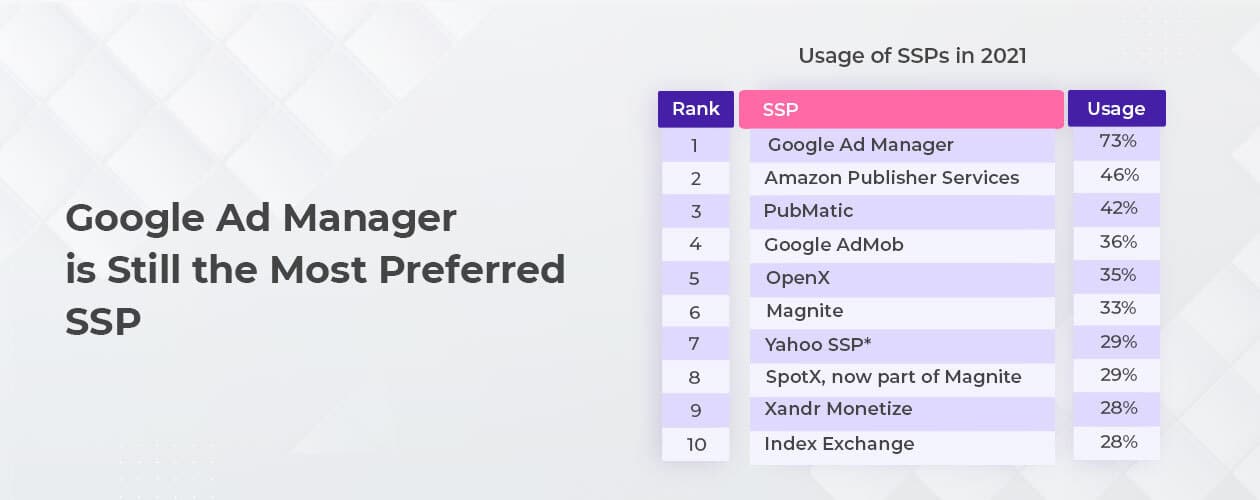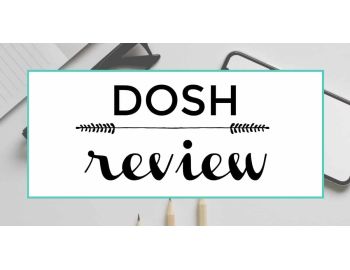
You'll want to hire a professional to write your content, no matter whether you're just starting an ecommerce business or are an expert. Listed below are some tips for ensuring that your content is written for the best possible results. Creating a buyer persona is a great way to create compelling content. To attract customers, you can use keywords and include persuasive words to persuade.
Creating buyer personas
Creating buyer personas is an excellent way to create content that targets the most likely buyers for your product or service. To better target your buyer, it is important to understand their goals and motivations. These buyer personas can be used to inform your marketing team, and help you write content that addresses their needs. This article will highlight the most important things to keep in mind while creating buyer personas for your ecommerce content writing.
Learning about your target market's behavior is the first step to creating buyer personas. You can look at the approach of your competitors to your target audience. Do they use surveys or web forms? What products and services do they care about most? Can you identify these buyers' characteristics? You can develop buyer personas by gathering data about your target market. You can develop content that is effective for your website by developing buyer personas using the information you have gathered.
After developing your buyer personas, you should distribute them to your marketing and sales team so that everyone is familiar with them. Personas are not complete. They will evolve as your company grows. You can update them as needed. Your buyer persona should reflect the journey of your customer from their first purchase to their last. This article will outline the most common steps for creating buyer personas.
Using keywords
You need to be aware of a few key factors when using keywords for ecommerce content. Keyword difficulty is an important consideration. This measurement reveals the difficulty of getting a keyword to rank for in Google. This information can be found using tools like SEMrush's Keyword Difficulty tool or Ahrefs Domain Rating (DR). Choose keywords with low competition and high transactional intent to optimize your content.
Research your keywords first. Keywords are an essential part of SEO, even though it might seem obvious. Google can penalize a website for using too many keywords. Long-tail keywords are best used in your content to avoid this problem. If your store sells sneakers you might include the term "nike shoe" in your product description. To increase the likelihood of your content being ranked, use a broader, more targeted, and more unique keyword strategy.
Keyword density should also be taken into consideration. Keyword density is another important factor. Long-tail keywords tend to have less competition than short-tail keywords. The luxury car service New York is an example of a long tail keyword. An additional region can be added after the keyword to enhance SEO. This helps local customers find your business. Keyword stuffing should be avoided, but you should remember that keywords should only be used when necessary.
Static content creation

Ecommerce sites can be created with static content much easier than ever. Ahead of time, you should have a clear, comprehensive list of all SKU codes for the products on your site. A website with a high conversion rate will need a current list of SKU codes. You can also build your brand and increase traffic by having a complete product catalog.
Dynamic content can improve the user experience. Relevant products and offers lead to higher conversions and an average order value (AOV). This article will explain how dynamic content changes on a website based on user signals. It matches customer segments with product segments. Ecommerce websites have many benefits from dynamic content. Read on for more information. Once you have decided which one works best on your site, it's time to start creating dynamic content.
Many people don't have the time or skill to write HTML code. Fortunately, there are static site generators that solve this problem. These programs can create static web pages which are easier to maintain than dynamically created content. While static content generators do not usually offer an administrative interface or WYSIWYG editor for editing, they can provide a command line interface to create content. A static site generator isn't a replacement for content management systems, but it can be an excellent alternative to an ecommerce site.
Include persuasive words
Writing eCommerce content requires persuasive words. Customers often associate truthfulness and easier content. Yet, many of them face tensions and struggles before making a purchase. Distracting statements can be used to shift their attention away from the struggle. Here are some persuasive words to help make your content more compelling. Once you are proficient in these words, you will be well on your path to increasing sales.
Power words can invoke strong emotions in a reader. They are able to evoke an emotion in a customer and give them a mental picture about what the product will look. These words are known as "power words" in eCommerce content writing. Bangs Shoes is one example. Their product descriptions include powerful words. This will help drive sales. And remember, a compelling product description should be easy to read and simple to navigate.
Customers often have very short attention spans. Most people visit eCommerce websites to seek answers to their questions or the right product. They're not looking to research for hours or read an entire book to make a purchase. So, while writing for eCommerce websites, focus on both the store's perspective and the user's perspective. Give them all the information they need upfront. If you can't write a compelling e-commerce copy, don't be afraid to challenge your readers.
Technical features should be kept in the back-end
Traditional ecommerce platforms tightly couple the front and back ends of their system. This makes it simple to set up an online store, but it also limits flexibility and creates vulnerabilities. For example, merchants on Shopify who use apps often struggle with site performance. Small popup widgets can reduce page speed, and may introduce vulnerabilities due conflicts between JavaScript CSS. If the merchant attempts to change a widget's appearance to look like an image, it can lead to the same issue.
Landing pages

To attract more online shoppers, you can create landing pages for ecommerce products. These landing pages need to be conversational as the visitors already have some knowledge of the brand. These landing pages should be convincing and have a compelling call-to-action button to direct visitors to the next step. Although it might seem difficult to develop a unique selling proposition (USP), this will allow you to position your brand and organize your landing pages.
Before you begin creating a sales channel, consider who you are trying to reach. You should consider your email marketing goals, and your sales goals. These will allow you to determine if your page is generating leads or converting them into customers. Google Analytics or email marketing software is also available to help you track the eCommerce landing pages. These topics will be discussed in detail in the next section.
It is not easy to create a landing page. You can make a landing webpage with a headline, sub-headline and a heading. But your main goal should be getting visitors to fill out their email address so they can make a purchase. While you're developing your eCommerce content writing, you can consider incorporating a sub-headline or an image to further increase your chances of converting visitors. It is important to create a compelling headline and make sure the content is useful and informative. Your SEO may also be enhanced by case studies and testimonials.
FAQ
How do I get started with SEO?
SEO is a process that can be used in many ways. The first step in SEO is to identify keywords you'd like rank for. This is known as "keyword research". Next, you need to optimize each web page for those keywords.
Optimization is the process of adding relevant titles and descriptions to your site, creating unique URLs and linking other websites. After optimization has been completed, you'll need to submit your website to search engines like Google, Yahoo!, and Bing.
To determine if you are succeeding, you must keep track of your progress.
What is an SEO strategy?
An essential part of any website is its content. If you don't have relevant and useful information on your site, you won't rank high enough for searches.
SEO campaigns help optimize your site by obtaining links back from other websites. It also includes social marketing optimization. This refers to using Twitter, Facebook or LinkedIn to drive traffic to your site and increase brand recognition.
These will help bring more visitors to your website and improve your rankings. An SEO campaign's main focus is building quality links back to your site so that Google knows that your website is valuable.
What Does SEO Stand For for Small Businesses?
The biggest challenge facing small businesses today is competing against larger companies that spend millions on advertising. Search Engine Optimization allows small businesses to leverage the same marketing power as larger companies without breaking the bank.
How can I create an SEO strategy for my website?
To create an effective SEO strategy, you must first understand what you want and how you intend to achieve it. This allows you structure your content to meet these goals.
Next, you need to begin working on keywords. By doing keyword research, you'll gain insight into what people are searching for when they use certain words. You can then create articles on these topics by using this information.
After you have written your articles, make sure to include your target keywords. You should optimize every article by including images and videos. Link to related pages whenever you can.
Now it's time for you to optimize the content that you have written.
Why SEO strategy is important?
The primary purpose of search engine optimization is to increase your site's traffic by getting as many people to locate you via Google.
Search engines such as Google, Yahoo!, Bing, and others store information about websites on servers called "crawlers," which send this data back to the company's central database. This allows them search engines to index web sites.
More people will click your link and visit your website if your website is high up in the search results. Therefore, you won't be found if you are not visible in these searches.
To ensure that your website is found by search engines, ranking high on all major search engines is the best method. Two main ways to do this are paid advertising and organic links.
Paid Advertisement - This is where companies pay per-click online ads that appear above other sites when searching for information. These ads can be banner ads or text ads.
Natural Organic Links: These are links where you have created a great site over time, and gained trust from your industry. Through blogging, guest posting and commenting, you can build links over time.
To remain ahead of the pack, it is important to invest continuously in both forms marketing.
Why should I use Social Media Marketing?
Social media marketing can be a great way for new customers to connect with existing ones. By posting interesting articles and engaging with others through comments and likes, you can create a community around your brand. This makes it easier and more convenient for potential customers to find your brand online.
Statistics
- 64% of marketers actively create SEO campaigns because they help hit multiple key performance indicators (KPIs), including increasing traffic, helping your site rank for relevant keywords, improving your conversion rate, and much more. (semrush.com)
- : You might have read about the time that I used The Content Relaunch to boost my organic traffic by 260.7%: (backlinko.com)
- A 62.60% organic traffic boost to that page: (backlinko.com)
- Sean isn't alone… Blogger James Pearson recently axed hundreds of blog posts from his site… and his organic traffic increased by 30%: (backlinko.com)
- These guides are designed and coded 100% from scratch using WordPress. (backlinko.com)
External Links
How To
How to Make a Successful Search Engine Optimization Campaign
Creative writing is a skill that requires you to be able to distinguish yourself from others.
You'll find that most writers are very similar. Writers tend to use the same writing patterns. They fall back to cliches and repeat themselves.
Breaking out from old patterns and coming up with new ideas is the key. That means thinking outside the box.
You must also find interesting ways to make you writing more engaging. Writing for an audience requires that you consider their motivations. What is it that makes them smile? What makes them giggle? What makes them cry?
What is it that excites them? What scares you?
These questions will help you think through your writing. Ask yourself why you think someone would care about your words. What makes you think anyone would read what you have to say?
Once you know this, you can begin crafting your story.
Start with your hook. It is important to start with your hook. It's the first impression you leave on readers. Choose wisely.
Next, decide whether or not your piece will be informative. Informational pieces explain facts. Persuasive pieces convince readers to agree with you.
Finally, determine whether you're going to tell stories or give examples. Stories are captivating. Exemples are an example of how something works.